The Best Standby Generators: Benefits, Types, Best Picks, How to Choose
A standby generator maintains your home's systems operational during a power outage. Others are portable for off-grid camping and mobile construction sites.

A reliable standby generator will be your greatest ally when hurricanes or power outages strike. Although expensive, they are a worthwhile investment and can be easily stored in a garage. They can help provide power for your indoor and outdoor applications.
It would help to have the ideal generator for your specific situation and purpose to take advantage of these advantages. This comprehensive guide to the best standby generator explains everything you need to know, including what it is, its types, how it operates, the best options, and how to choose the best standby generator. We recommend Jackery Solar Generators as the best standby generators for backup power supply with solar energy.
|
Products |
Capacity |
Output |
Cell |
Cycle Life |
|
3024Wh |
3000W |
Lithium-ion Battery |
2000 cycles to 70%+ capacity |
|
|
2-24kWh |
3000W |
LFP (LiFePO4 battery) |
4000 cycles to 70%+ capacity |
|
| Solar Generator 1000 Plus | 1264Wh | 2000W | LFP (LiFePO4 battery)y | 4000 cycles to 70%+ capacit |
What Is A Standby Generator?
In a power outage, a standby generator provides backup power to your residence, commercial and industrial applications, and facilities. Generally stationary and requiring a concrete footing as a foundation, standby generators are typically installed outside of your facility.
Standby generators are a dependable option that, based on the types of fuel and generator setup, can offer electricity for days during extended power outages. In contrast to prime or continuous generators, standby generators are only utilized during power disruptions caused by inclement weather, natural or artificial disasters, or regular blackouts caused by an aging power grid.
Standby generators restore power in the event of a utility power interruption. The most common causes of disruptions are storms and equipment malfunctions, but other causes include traffic accidents, animal damage, and even deliberate sabotage.
What Are The Benefits of A Standby Generator?
As a backup power source, standby generators not only keep the lights on, but they can also maintain a secure working environment for you and your employees. In a power outage, the air conditioner or heater will continue to operate without interruption.
- Backup Power Source
The air conditioner, fridge, sump pump, and more appliances can all run on backup power from a single standby generator. Whether going off the grid permanently or temporarily due to an emergency, you should be able to operate everything at total capacity if your property is adequately estimated and installed.
- Increased Power Capacity
The standby generators can do this because they have greater power capacities than most other generators and can operate for an extended period without requiring maintenance.
- Always Standby
To be prepared for power outages and other emergencies, you must stock up on fuel, which is frequently in limited supply. These are not issues with whole-house generators, which can utilize gasoline from a significantly larger tank.
- Commercial Use
Servers, processing machinery, and security systems are just some of the automated computer systems and equipment you may keep online with the help of a commercial standby generator. Most importantly, having a backup generator to keep your business operations running reduces profit loss and maintains productivity.
What Are The Types of Standby Generators?
Regardless of the cause of the power outage, electricity is required to maintain essential electrical circuits operational. A standby generator ensures that the household or business has sufficient power.
The backup system promptly detects a power failure and waits a few seconds for the power to return. If not, the generator engine is started.
- Diesel Generator: Attached to standby diesel generators are fuel containers that supply fuel to the generator's internal combustion engine, enabling electricity generation. Diesel generators have a smaller storage capacity and a higher acquisition cost than their natural gas counterparts.
- Gas Generator: Generators powered by natural gas in your area can bypass the need for a fuel storage tank by hooking up directly to the gas mains. As long as the main gas utility line is functional, the generator can run eternally without refueling. Maintenance of natural gas generators is more frequent, and gas service is typically cut off during a storm, tornado, or earthquake to prevent accidental explosions.
- Solar Generator: Technically, a solar generator is a power generator that runs on solar energy. It refers to using solar panels and portable power stations to capture, store, and distribute solar energy. The solar panels convert sunlight to electricity, then are deposited in a power plant.
With the advancement of LiFePO4 battery technology, you can use more electricity. Jackery Solar Generator 2000 Plus capacities range from 2 kWh to 24 kWh, sufficient for residential and commercial use. Jackery Solar Generator powers your residence with clean, renewable, and limitless solar energy. It is straightforward to capture sunlight during the day, and store energy for night use in the power station.
|
Standby Generators |
Pros |
Cons |
|
Diesel Generator |
l Internal combustion l Higher capacity l Higher resistance |
l High cost of diesel l Limited tank capacity l High noise level l Need diesel refill |
|
Gas Generator |
l Connect to pipeline l Fuel available l Pollutant |
l High noise level l Need more maintenance l Potential risks in extreme weather |
|
Solar Generator |
l Easy to use l Versatility l Sustainability l Durability l No maintenance |
l Relatively low capacity |
How Does A Standby Generator Work?
The electrical panel of your facility is directly connected to external fuel source standby generators (natural gas or diesel). In the case of home generators, the fuel type and generator dimensions determine what can be powered and for how long.
Most commonly, standby generators are coupled with an automatic transfer switch, which activates the standby generator within seconds of a power outage.
After a power disruption, the ATS switch disconnects your facility from the utility's primary power grid. After the facility has been safely and entirely disconnected from the power grid, the switch activates the generator to supply electricity to the electrical panel.
However, maintaining diesel and natural gas generators as standby generators is time-consuming, and they are more susceptible to being impacted by extreme weather conditions or running out of fuel. Choosing a solar generator as your home's standby generator is the best method to power your home with renewable energy during power outages.
How Do Jackery Solar Generators Work?
Solar products manufactured by Jackery, such as solar panels, portable power stations, and solar generators, have earned the company widespread recognition. Jackery Solar Generators are gaining popularity as a mobile and environmentally-friendly method to generate electricity. They can power tiny and large devices, including phone chargers, lights, and larger appliances, such as televisions and refrigerators.
In emergencies, a solar-powered backup or portable generator can be a savior. Suppose you live in an area prone to power outages. There's no need to worry about losing power and leaving your family in the dark if you have a Jackery Solar Generator.

Jackery Solar Panels typically use monocrystalline solar cell technology to convert sunlight to electricity. Solar panels can be connected to the Jackery Portable Power Station via the solar connector and cables for optimal energy storage and utilization. You can connect Jackery Solar Panels in series or parallel to third-party power stations. Solar panels, AC receptacles, and carports can all be used to recharge portable power stations.
Jackery Solar Generators: The Best Home Standby Generators
Due to their increased capacity and advanced solar technology, Jackery Solar Generators are the finest rechargeable home generators. It takes only sixty seconds to set up a solar generator, which is sufficient for emergencies.
Using a solar generator to power a residence takes advantage of the limitless and renewable energy sources of solar systems. But the first step is determining how much solar energy your home requires.
How Much Solar Power Do You Need?
Its wattage consumption must be determined to calculate the solar energy required for a residence. Then, using the Watt-hour formula, calculate the magnitude of the solar system for your home:
Watt-hours = Watts x Hours = (Volts x Amps) x Hours
For example, if your 5-amp window AC requires 120V DC, it is 600W. 4.2kWh (600W x 7H) of solar energy will be needed if the window AC is used for 7 hours daily.
In addition, running and commencing wattage can be used to calculate how much solar power is needed. Add the most excellent starting watts to each appliance's operating watts to determine the total starting watts required.
|
Appliances |
Power Usage |
Time |
Solar Power Needed |
|
Window AC |
600W |
3H |
1800Wh |
|
Central AC |
900W |
3H |
2700Wh |
|
Electric Stove |
1200-1300W |
20Mins |
400-433Wh |
|
Dehumidifier |
50W |
1H |
50Wh |
|
Refrigerator |
300-800W |
8H |
2400-6400Wh |
|
Microwave |
1000W |
10Mins |
167Wh |
|
Light Bulb |
2-18W |
6H |
12-108Wh |
The Best Home Standby Generators Explained
Jackery Solar Generators have a larger capacity and are competitive for being a home standby generator. A Jackery Solar Generator is designed to power appliances, electronic devices, and illumination in remote areas, such as campsites and RVs. The generator can supply the entire residence when the power runs out at home. Continue reading to learn more about home Jackery Solar Generators.
Jackery Solar Generator 3000 Pro
- Capacity: 3024Wh, 3000W Inverter, 6000W Surge
- Cell Chemistry: Lithium-ion battery
- Cycle Life: 2000 cycles to 70%+ capacity
- Management System: BMS, over-voltage protection, short circuit protection
- Dimension: 18.6in x 14.1in x 14.7in
- Recharging Time: Solar panel (3-4H), AC adapter (2.4H), car adapter (35H)
- Output Ports: 1*AC Output: 120V~ 60Hz, 25A Max; AC, 3*AC Output: 120V~ 60Hz, 25A Max; 2*USB-C: 100W Max, 5V⎓3A, 9V⎓3A, 12V⎓3A, 15V⎓3A, 20V⎓5A; 1*Carport: 12V,10A Max.
Jackery Solar Generator 3000 Pro is your SMART power master with a massive 3024Wh capacity and enormous 3000W power output to meet your electrical needs. The Explorer 3000 Pro power station supports APP control and can charge 99% of devices for an extended period, making it an ideal power supply for emergencies at home.

The MPPT technology guarantees a 99 percent solar recharge efficiency. The power plant can be fully charged in less than 1.80 hours. In addition, wall charging takes 1.8 hours to complete, and automobile charging is supported. You will no longer be concerned about power disruptions.
The Explorer 3000 Pro automatically modifies its output power at temperatures between -10 and -20 degrees Celsius based on its remaining battery capacity. Based on numerous simulation experiments, nine temperature sensors determine the location of the optimal temperature.
|
|
Appliances Wattage |
Working Hours |
|
Solar Generator 3000 Pro |
Window AC: 600W Central AC: 900W Electric Stove: 1200W Refrigerator: 500W Microwave: 1000W |
Window AC: 4H Central AC: 2.7H Electric Stove: 2H Refrigerator: 4.8H Microwave: 2.4H |
*Learn more details from our product page.
Jackery Solar Generator 2000 Plus
- Capacity: 2-24 kWh, 3000W Inverter, 6000W Surge
- Cell Chemistry: LFP (LiFePO4 battery)
- Cycle Life: 4000 cycles to 70%+ capacity
- Dimension: 7in x 18.6in x 14.1in, 61.5 lbs/ 27.9 kg
- Operating Temperature: Charge temperature:0~45°C (32~113 °F) , discharge temperature:-10~45°C (14~113°F)
- Recharging Time: Solar panel (2H), AC adapter (2H), car adapter (25H)
- Output Ports: 4*AC Output: 120V~ 60Hz, 20A Max, AC; 1*AC Output: 120V~ 60Hz, 25A Max, AC Total Output,3000W Max, 6000W surge peak; 2*USB-A: Quick Charge 3.0, 18W Max; 2*USB-C: 100W Max, (5V, 9V, 12V, 15V, 20V up to 5A); 1*Carport: 12V⎓10A.
The capacity of the Solar Generator 2000 Plus is expandable from 2 kWh to 24 kWh. Add solar panels and a battery pack to attain 24 kWh of expansion. It is ideal for whole-house power supply and supplying power during extended outages. Incredibly, an entirely solar-charged battery can now be completely independent of the power grid in just two hours.
The Solar Generator 2000 Plus can be entirely charged in only two hours using six SolarSaga 200W solar panels. The power source becomes self-sufficient by recharging itself with solar energy rather than the power grid. Solar panels can charge the first add-on battery pack in the industry, allowing for greater flexibility and saving time and energy during the charging process.

Utilizing a novel variable-speed charging algorithm enhances safety and doubles the battery pack's lifespan. Jackery enables the management and monitoring of your 2000 Plus. Even if used once a day, the superior LiFePO4 battery has a lifespan of up to ten years, as it was designed for durability. Utilize the Jackery App to manage and monitor your 2000 Plus. It supports various devices, real-time status monitoring, and customizable settings, among other features.
|
|
Appliances Wattage |
Working Hours |
|
Solar Generator 2000 Plus |
Window AC: 600W Central AC: 900W Electric Stove: 1200W Refrigerator: 500W Microwave: 1000W |
Window AC: 2.7H Central AC: 1.8H Electric Stove: 1.4H Refrigerator: 3.3H Microwave: 1.6H |
*Learn more details from our product page.
Jackery Solar Generator 1000 Plus
- Capacity: 1264Wh, 2000W Inverter, 4000W Surge
- Cell Chemistry: LiFePO4
- Cycle Life: 4000 cycles to 70%+ capacity
- Dimension: 11.14in (28.3cm) * 10.24in (26cm)* 14in (35.6cm), 32lbs (14.5kg)
- Operating Temperature: 14-113℉ (-10~45℃)
- Recharging Time: Solar panel (200W*6) (2H), AC adapter (1.7H), car adapter (7H)
- Output Ports: AC Output(x3): 120V~60Hz, 2000W (4000W Peak), USB-A Output(x2): 18W Max, 5-5V⎓3A, USB-C Output(x2): 100W Max, (5V, 9V, 12V, 15V, 20V up to 5A), Car Port(x1):12V⎓10A
The Jackery Solar Generator 1000 Plus is a large capacity charging solution that can charge 99% of the household or outdoor appliances for long hours. Whether you want to charge an electric grill to cook food or a heater to keep the space warm during the winters, the solar generator has got your back. It is also expandable that lets you expand the battery capacity from 1.2kWh to 5kWh with the Jackery Battery Pack 1000 Plus.
|
|
Appliances Wattage |
Working Hours |
|
Solar Generator 1000 Plus |
Window AC: 600W Central AC: 900W Electric Stove: 1200W Refrigerator: 500W Microwave: 1000W |
Window AC: 1.7H Central AC: 1.1H Electric Stove: 53 min Refrigerator: 2.1H Microwave: 1.0H |
*Learn more details from our product page.
How to Choose The Best Standby Generator?
Avoid making a hasty decision when choosing the best standby generator for your home. Consider essential features like your home's power requirements, the power output, and fuel source are the most suitable.
- Power Consumption
When choosing the finest standby generator for your home, you must first consider its power requirements. Check the wattage of appliances such as the stove, refrigerator, laundry machine, and furnace. To determine the total wattage required to operate the home, add the wattages of all essential appliances.
- Fuel Type
Natural gas, liquefied propane, diesel, and dual-fuel options are available when determining the optimal fuel source for a standby generator—or renewable sources for a standby generator, such as solar or wind power.
- Automatic Start System
Automatic-start systems monitor the home's electrical system; if the power goes out, the system detects the disruption and starts the generator automatically within one minute. These systems also perform regular exercise cycles to maintain the charge of the starting batteries.
- Warranty
You want to be sure that your thousands-of-dollar investment in a home backup generator is safe in the case of a breakdown. When selecting a standby generator, it is essential to scrutinize the accompanying warranty.
The Best Standby Generator FAQs
These are the most commonly asked queries regarding the best standby generator:
- What size of solar generator do I need for my home?
The Jackery Solar Generator is famous for its high output, portability, and versatility. Choose between 240Wh and 24kWh based on your home's energy requirements.

Before purchasing a solar generator, you must estimate your home's energy consumption to ensure it meets your requirements. A residence consumes between 3 and 5 kWh of energy per day. Then, simple calculations can be used to estimate how long the Jackery Solar Generator will continue to function.
Working Time = Power Station Capacity*0.85 / Your Device's Operating Wattage
For example, charging a 600W window AC with the Solar Generator 3000 Pro (3024Wh capacity) will require 4 hours (3024Wh*0.85/600W).
- How long can a standby generator run?
It is contingent upon the generator and fuel source. Each manufacturer of standby generators stipulates that maintenance checks must be performed on the unit while it operates continuously, necessitating its shutdown. Please consult your owner's manual for maintenance intervals and the maximum operating time of your generator.
As previously mentioned, you can use the formula to determine how long the Jackery Solar Generators for your home will power your household appliances. In addition, Jackery Solar Generators are compatible with solar panels, AC receptacles, and carports for recharging. Due to the pass-through function, you can simultaneously power your appliances and Jackery Portable Power Stations.
Final Thoughts
Home backup generators are the best protection against power disruptions. They automatically ensure that the power remains on at your residence when the rest of the neighborhood loses power. This article discusses the best home standby generator, its benefits, types, working principles, top choices, and how to choose one. With increased capacity and conversion efficiency, Jackery Solar Generators are the finest renewable energy source for powering your home.
Disclaimer:
The runtime mentioned for appliances powered by Jackery is for reference only. Actual runtime may vary under different conditions. Please refer to real-world performance for accurate results.

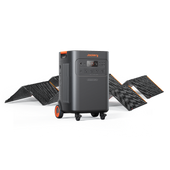











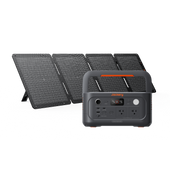





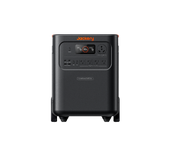
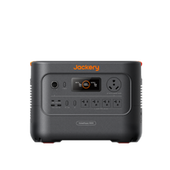





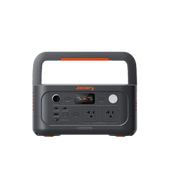





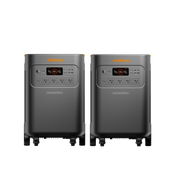
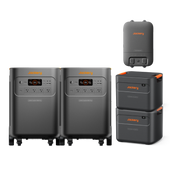





![[Add - on] Jackery Manual Transfer Switch for Explorer 5000 Plus - Jackery](http://www.jackery.com/cdn/shop/files/add-on-jackery-manual-transfer-switch-for-explorer-5000-plus-9017324.png?v=1754016782&width=170)

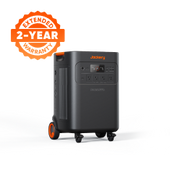
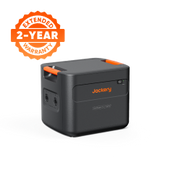
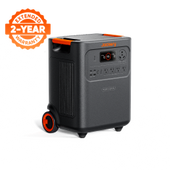





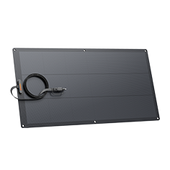
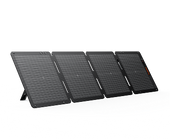




















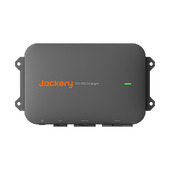




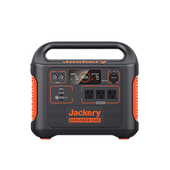







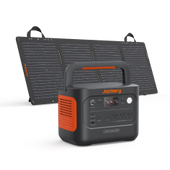
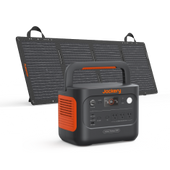





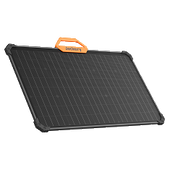
















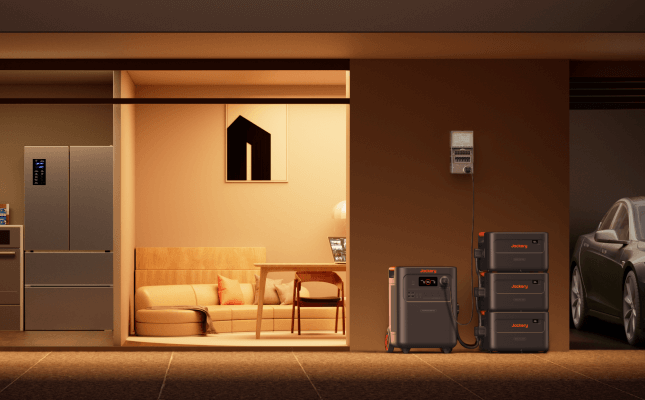


















Leave a comment